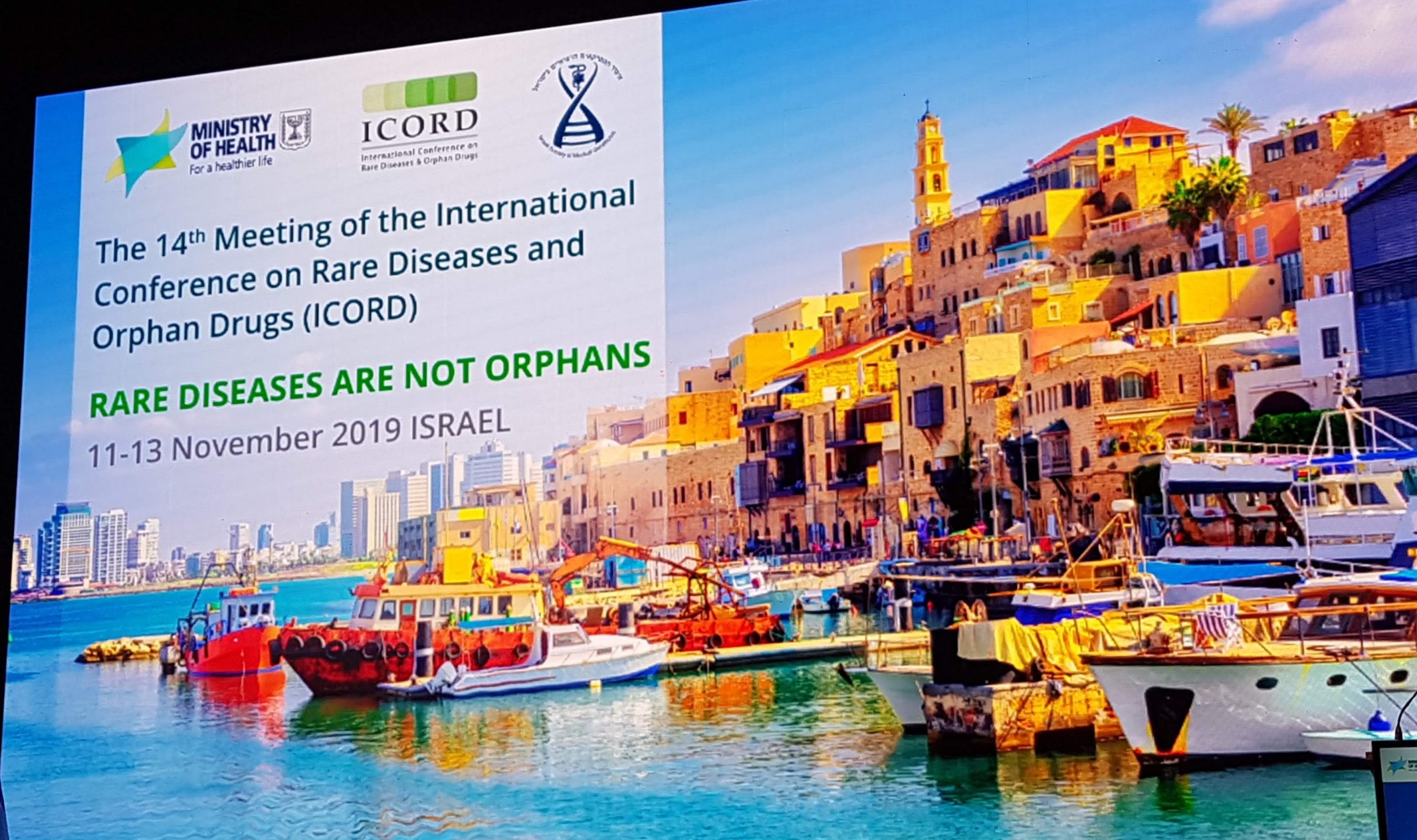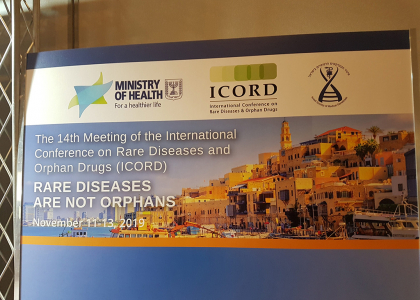ICORD 2019 – Tel Aviv
ICORD 2019 – Tel Aviv
Report ICORD 2019 – Tel Aviv

On 11, 12 and 13 November 2019, the global ICORD conference was organised in Tel Aviv, Israel in close cooperation with many Israeli organizations such as the Ministry of Health.
The first day was mainly devoted to all kinds of genetic topics. One of the speakers was the Dutch professor Prof. Dr. Han Brunner.
Some of his conclusions:
- Hundreds of genes are involved in intellectual incapacity.
- In men and women, the types of mutations are different.
- In medical diagnosis, genetic research performs better than doctors.
- They have seen a correlation between cerebrum and autism in relation to intellectual incapacity.
Most families with a serious or progressive condition opt for a complete genetic examination (Whole Exome Sequencing, WES). Some patients with milder or stable conditions choose targeted analysis (limited genetic research).
They have developed a compact consent form for exome sequencing that consists of the following parts:
- A general section on the procedure to be approved by all individuals.
- A section that all individuals need to understand and approve about the possibility that other anomalies can be found occasionally.
- The final section is about the data that researchers are allowed to share with other researchers.
Dr. Idit Maya
Dr. Idit Maya (Israel) presented a training program for doctors who wanted to know more about genetics. The ages range from young doctors to doctors who are already retired. Participating in this intensive one-week course requires, among other things, a high level of personal motivation. After the course, knowledge about genetics had increased on average by 15%.
International Rare Diseases Research Consortium (IRDiRC)
Founded in 2011, this organisation aims to work together internationally to stimulate, better coordination and maximize the results of research into rare diseases worldwide.
They have set targets for 2017:
- Patients suspected of having a rare disease should be diagnosed within one year if their illness is known in the medical literature.
- All currently undiagnosed individuals are added to a global diagnostic and research system.
- For rare diseases, 1000 new therapies will be approved.
- Methodologies are being developed to estimate the impact of diagnoses and therapies on patients with rare diseases.
Cost of new medicines
Discussions about the cost of medicines have been raging worldwide for years. During the conference of the American Organization for Rare Diseases (NORD) this topic was also widely discussed. The cost of medicines can also vary enormously from country to country.
In this session, the ‘value-based’ model was discussed. This means that the cost of medication is determined by the effectiveness of the medication and/or how often the medicine is taken.
Primary and secondary prevention of rare diseases
Dr. Domenica Taruscio gave a presentation on the prevention of rare diseases. They made the following classification:
- Primary prevention: eliminating or reducing risk factors that cause rare diseases and increasing protective factors.
- Secondary prevention: research or testing to identify a condition and ensure that effective treatment can be applied.
- Tertiary prevention: treating a distinct disease to prevent further progression or further suffering.
About 50% of all congenital diseases cannot be linked to a specific cause. There are known genetic, environmental and other risk factors.
Genetic factors
- Genes play an important role in many congenital diseases. This can be by inheritance or by a sudden modification of genes.
- Kinship also increases the occurrence of rare genetic disorders.
- Some ethical communities have a relatively high number of rare genetic mutations.
Socio-economic and demographic factors
- Low income can affect congenital disorders.
- It is estimated that about 94% of severe congenital disorders occur in low and middle-income countries.
- Another factor is the age of the mother. The older the mother, the higher the risk of chromosome abnormalities such as Down syndrome.
Environmental factors
- Exposure to pesticides and other chemicals, medication, alcohol and radiation during pregnancy can increase the risk of the fetus or newborn having a congenital disorder.
- Living or working near waste sites can be a risk factor especially if the mother is exposed to other environmental risk factors or nutritional deficiencies.
Infections
- Infections such as syphilis and rubella are major causes of congenital disorders in low and middle-income countries.
- Zika virus causes microcephaly during pregnancy.











